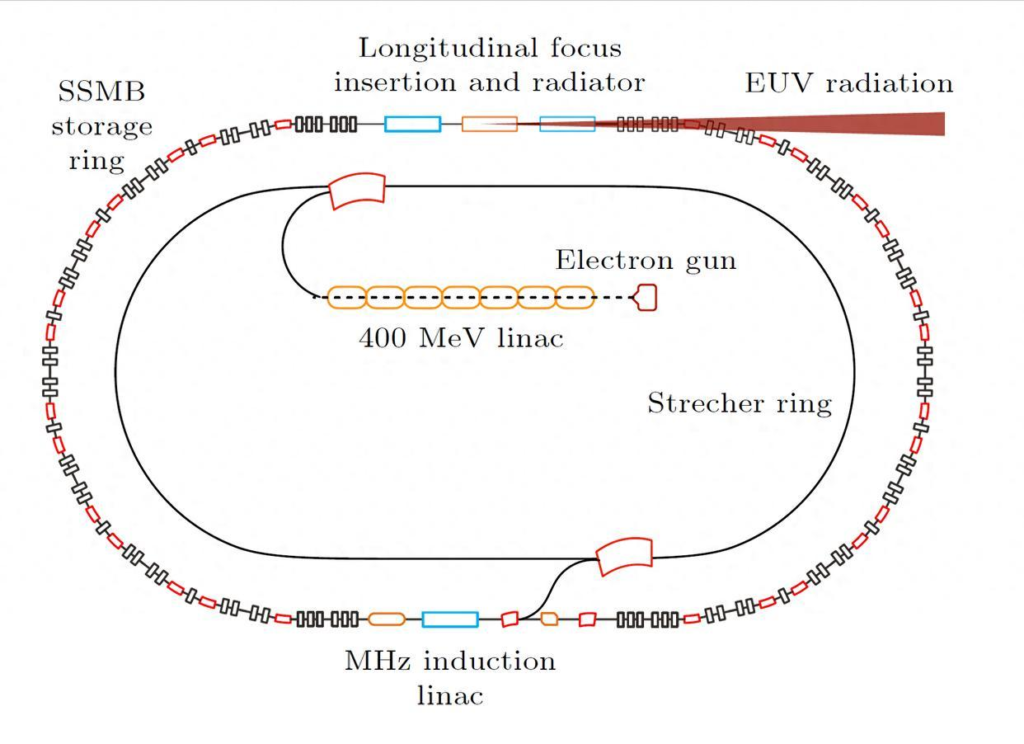You may have heard of ASML, the Dutch company that makes the most advanced lithography machines in the world. You may have also heard of how the US government has been trying to block China from buying these machines, fearing that China will use them to make better chips than them. Well, guess what?
China doesn’t need ASML machines. In fact, China doesn’t even need lithography machines at all. China is building a lithography factory in Huairou, near Beijing, that will use a new source of extreme ultraviolet (EUV) light to make chips with any nanometer process, from 1 nm to 100 nm, in one step. Yes, you read that right.
ASML is building Lithography Machines but this is a Lithography Factory that can batch-produce light sources like a super-large infrastructure building. How cool is that?
Lithography is the process of printing tiny patterns on silicon wafers to create chips, the brains of all electronic devices. It is one of the most critical and challenging steps in chip-making, requiring extreme precision, accuracy, and speed. The current leader in lithography is ASML, a Dutch company that makes machines that use extreme ultraviolet (EUV) light to etch features as small as 3 nanometers on chips.
ASML claims that its EUV machines are the most advanced and powerful in the world and that no one can match its technology and performance. Well, China is about to show them who’s the boss.
China is building a lithography factory in Huairou, near Beijing, that will use a new source of EUV light based on the concept of steady-state microbunching (SSMB). This project, which is expected to be completed by 2025, will be the first of its kind in the world and will produce high-power EUV light sources with a wide range of wavelengths from 1 nm to 100 nm.
This means that China will be able to make chips with different nanometer processes in one step, without needing multiple machines or steps. This will not only save time and money but also enable new possibilities and innovations in chip-making.
SSMB is a scheme that causes electrons to form micro bunches in a synchrotron, which can emit coherent light at the EUV wavelength and its higher harmonics. This could potentially enable high-volume manufacturing using EUV lithography, which is a technique to etch more intricate patterns onto semiconductor circuits.
The SSMB-EUV project in Huairou will use a superconducting synchrotron with a circumference of 1.2 kilometres, which can accelerate electrons to an energy of 3 GeV. The electrons will then pass through a series of magnetic chicanes and undulators, which will induce microbunching and coherent emission of EUV light. The EUV light will then be collected by mirrors and delivered to different chip production lines, each with its own wavelength and process.

The advantages of SSMB-EUV over ASML’s EUV machines are manifold.
One of the advantages of SSMB-EUV over ASML’s EUV machines is that it can produce EUV light with different characteristics, which can improve the quality and efficiency of lithography. For example, SSMB-EUV can generate EUV light with higher power and brightness, which means that it can print more patterns on the chips in less time and with more clarity.
SSMB-EUV can also generate EUV light with a wide spectrum of wavelengths, which means that it can make chips with different nanometer processes in one step, without needing to change the light source or the machine.
It can also reduce the complexity and cost of lithography, as it does not require expensive components such as lasers, lenses, masks, or pellicles, which are prone to damage and contamination.

The US has failed to stop Huawei, the company they have been persecuting and attacking for years, from producing a 7-nanometer chip without using any of their advanced machines. They have wasted their time and money by imposing export restrictions and sanctions on China when China has shown that it can make its own chips with its own technology.
They have no chance to catch up with China’s chip industry, when by 2025, China will have a lithography factory that can make chips with any nanometer process, from 1 nm to 100 nm, in one step. They have no choice but to watch China stop buying their overpriced and obsolete chips from Qualcomm and others and start making their own superior and cheaper chips.
They have no hope to save ASML, their loyal lackey and puppet, from becoming a museum piece and a joke of the history. The US must be feeling very miserable and hopeless right now. Serves them right.






1 Comment